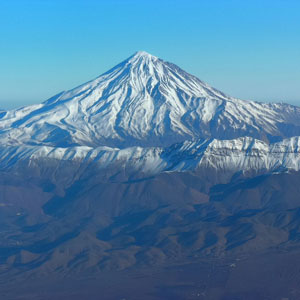 Signin with Google
Signin with Google Signin with Facebook
Signin with Facebook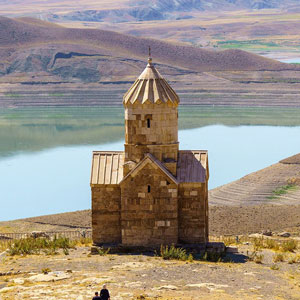
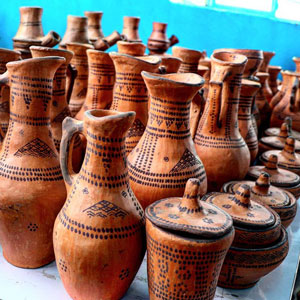
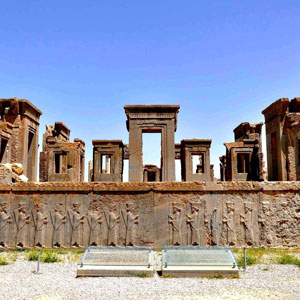 Places,Culture,History
Places,Culture,HistoryBazaar, a Gateway into Iranians Ancient Culture
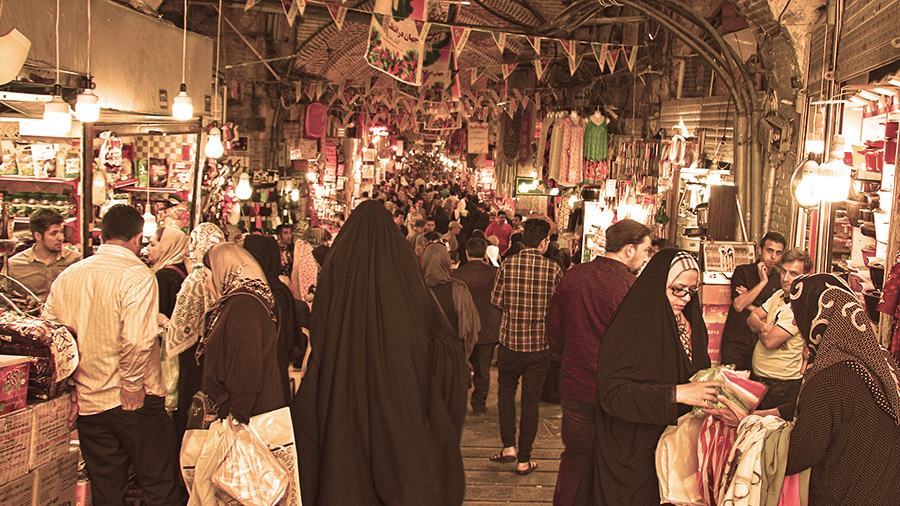
Have you ever fancied a time trip, witnessing Iran’s local life at a glance? Then you shall fulfil your desire in the heart of every Iranian bazaar!
We basically perceive the bazaar as merely a place of trade, however delving deep into the swathes of the history of the Iranian Bazaar, proves that Bazaar not only transcends beyond a “place” but above all it was a society, born several thousand BC, gradually taking shape with the expansion of villages, maturing through various dynasties, and growing into an independent community. A community that became a symbol of solidarity and persistence, especially during the Islamic era through which Bazaar, as a guild organization played a significant role in resisting tyrannical governments and rulers.

Various types of Bazaar and their Elements
Can you imagine a Bazaar having a personality and character of its own? Well if the answer is yes, then you’re one step ahead.
Besides the undeniable social influences of Iranian Bazaars, various types of “Bazaars” were categorized based on their functionality and architectural characteristics Referring to centralized Bazaars which were basically built around squares like Isfahan’s Imam Square Bazaar, Kerman’s Ganj-Ali Khan Bazaar, Yazd’s Khan Square Bazaar, and Tehran’s Sabzeh-Meydan, they are being recognized through their differences from the classic Iranian Bazaar.
On the other hand, linear Bazaars were, considered “Classic Iranian Bazaars”. These Bazaars either organically expanded such as Tehran’s famous Grand Bazaar and a part of Kerman’s Bazaar. Rasteh, Dalan (Hall, Corridor), Charsoo, Meydan (Square), Jelokhan (mini Square), and architectural areas including Hojreh or Dukkan (Small Shop), Caravanserai, Timcheh (Mini Caravanserai) and Qeysariyeh beautifully complement each other.
Bazaars as mercantile and service complexes were divided into rows of shops called Rasteh, each named either after their speciality and industry or the good they sold: Mesgar-ha= Coppersmiths, marketers' motherlands: Rasteh Khorasani-ha or an important architectural area near the Bazaar. “Rasteh Zargar-ha” directly pointed to the shops in the Goldsmithing industry and were located in specific areas called “Qeysarieh” that were considered for Dukkans selling delicate or expensive items.
Charsoo is a manifestation of architectural grandeur in the heart of the Iranian Bazaar. When two Rastehs unite like two lovers at the intersection and Charsoo gets birth at the centre of attraction.
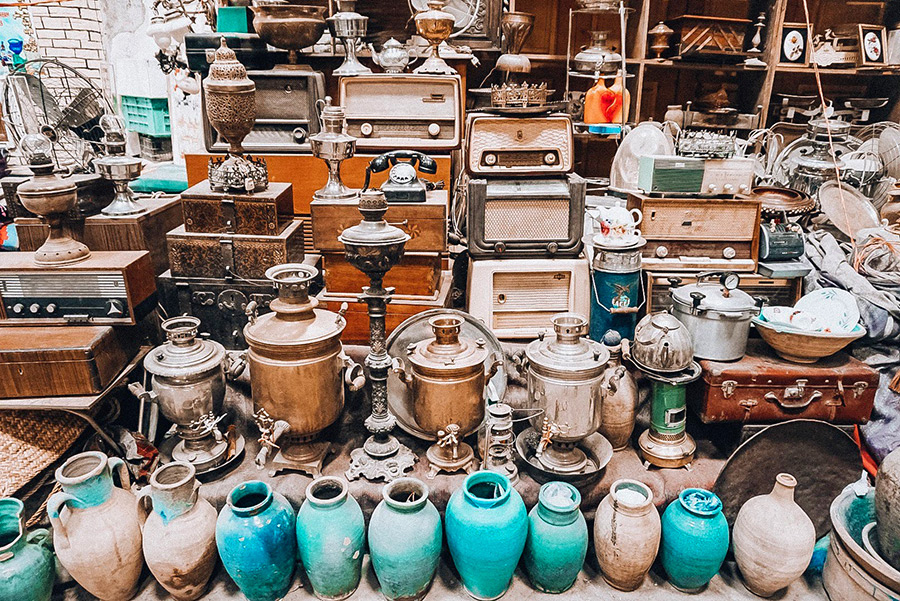
Rule-Governed Pacifism
To preserve amity between the people and the tradesmen, rules were set. They should have been obeyed or else marketers would face punishments. Prices were regularly checked by someone called “Muhtaseb” Lest they cheat or sell poor quality products. Muhtaseb was a wise and powerful person whose judgements were highly dependable.
The locations where each occupation was established were of high importance. The nearer they were to the city centre the more their economic value, not to mention the more secure they were, such as “Rasteh Zargar-ha”.
Accommodating caravans travelling with four-legged animals inside the Bazaar was prohibited; therefore they built Caravanserais near the cities’ gateways. The caravanserais were equipped with chambers and bathrooms so that merchants could clean up and get a well-deserved rest before heading to the Bazaar.
Teaching children at home and in the mosques was considered inappropriate therefore they built religious schools near the Bazaar.
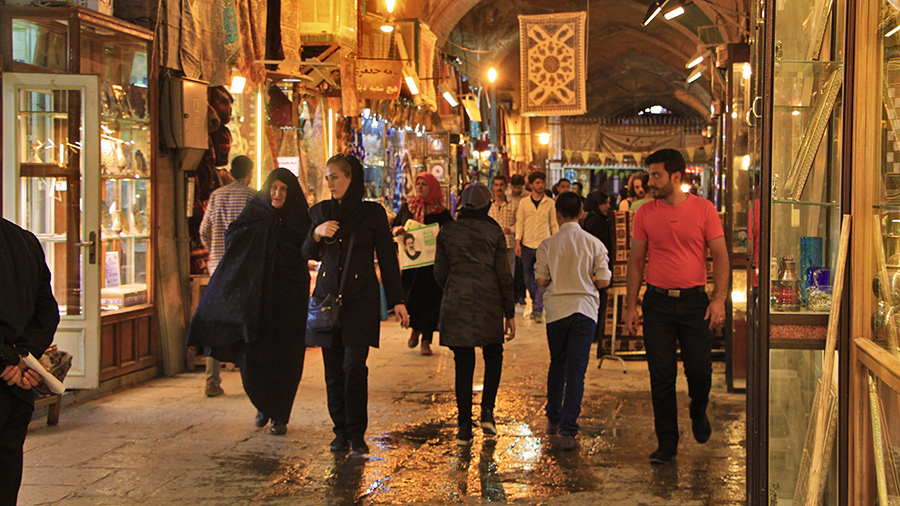
Bazaar a Showcase of a Country’s Culture
Bazaars were formed around and expanded along the cities’ most important routes, starting from one of the city’s gateways leading to the city’s downtown. As cities’ “Connection highways”, the governments utilized Bazaars as tribunes to notify people of new announcements. A person called “Jarchi”, would stand on a platform in the middle of the crowd and shout “Attention!, I have an announcement to make.”
Due to the locative centrality of the Bazaars, cities’ various facilities and areas such as mosques, caravanserais, public baths, religious schools and city landmarks were built either in close proximity to the Bazaar or at its margins.
Additionally, the significance of marketers’ social status made Bazaars a perfect place for social activities. During national (Nowrouz) and religious celebrations Bazaars were embellished and wore beautiful illuminations. During mourning periods, particularly in Muharram, the Bazaars closed their shutters, dressed in black and mourned the death of Imam Hussein through very special rituals.
Therefore, Bazaars could be considered gateways into Iranian ancient and religious culture.

Bazaar- More than just a Marketplace
Aside from the roofless temporary Bazaars in smaller cities, the permanent Bazaars in bigger cities such as Tehran, Tabriz, Isfahan, and Qazvin made them perfect refuges at times of cold and heat. An Iranian Bazaar whose name embroiders the list of UNESCO Heritage Sites is the great Tabriz Bazaar. Protectively gathering all of its belongings under a roof, this Bazaar is known to be the biggest roofed bazaar in the world.
As you’re walking through any Bazaar in Iran, you’ll be enchanted by the inviting smell of food coming from the Bazaar’s Restaurants. Restaurants in the Bazaars have long been known to serve the best of foods. There’s a saying that says the older the wine the better it tastes, the same applies to these restaurants. A long walk followed by lunch at one of the 150+ -year-old restaurants in a Bazaar sounds like a perfect idea! Many people, including tourists, line up for Shamshiri, Sharaf-ol-Islam and Moslem restaurants offering the heavenly taste of Kebab in Tehran’s Grand Bazaar.
Iranian meal is not complete without tea. So following a delicious Persian food such as Kebab or “Abgoosht” (aka Dizi), treating yourself with an aromatic cup of Iranian brewed tea in one of the many teahouses in the Bazaars is a must. On your next trip to Iran, don’t forget to pay “Haj-Ali Teahouse”- literally the tiniest teahouse in the world- a visit to Tehran’s Grand Bazaar.
All in all, Bazaars were united societies rather than solely economic places.

By Sara Kheirdoust / TasteIran

